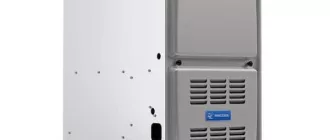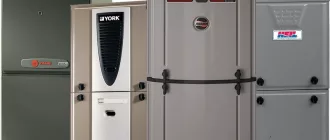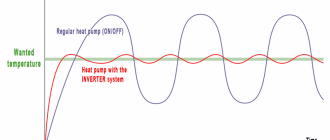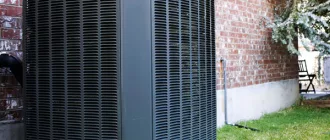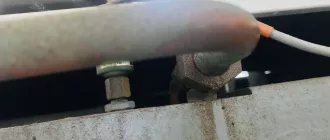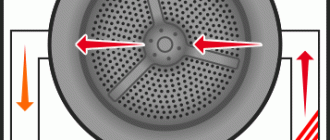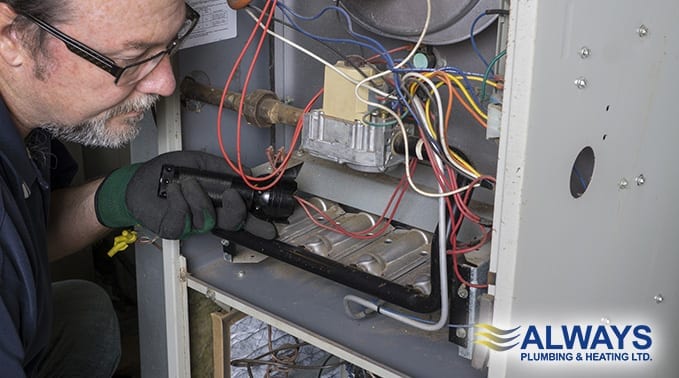
How to Prevent a Furnace Emergency This Winter
As the winter season approaches, it’s important to take proactive steps to ensure that your furnace is in top working condition. Any unexpected breakdowns can not only leave you feeling uncomfortable, but can also be costly to fix. By following a few simple tips, you can prevent a furnace emergency and ensure a smooth winter season.
One of the most important steps in preventing a furnace emergency is regular maintenance. Hiring a professional to inspect and tune up your furnace before the cold weather sets in can help catch any potential issues before they become major problems. This includes cleaning the system, checking for leaks, and ensuring that all components are functioning properly.
Another key factor in preventing a furnace emergency is keeping the area around your furnace clean and clear of debris. Dust, dirt, and other obstructions can not only affect the efficiency of your furnace, but can also pose a fire hazard. Regularly vacuuming and dusting the area around your furnace can help keep the system running smoothly and decrease the risk of a breakdown.
It’s also important to replace your furnace filter regularly. A clogged or dirty filter can restrict airflow and force your furnace to work harder, which can lead to overheating or other issues. Checking your filter monthly and replacing it as needed can help improve the efficiency and lifespan of your furnace.
By following these tips and taking a proactive approach to furnace maintenance, you can significantly reduce the risk of a furnace emergency during the winter months. Ensuring that your furnace is in top working condition will not only keep you warm and comfortable, but can also save you money on costly repairs. Don’t wait until it’s too late – take the necessary steps now to prevent a furnace emergency and enjoy a smooth winter season.
Preventing a Furnace Emergency:
A furnace emergency can be a major inconvenience and even a safety hazard. To ensure a smooth winter season, it’s important to take preventive measures to keep your furnace running smoothly. Here are some tips to help you prevent a furnace emergency:
- Regular Maintenance: Schedule annual maintenance for your furnace by a professional technician. This will help identify any potential issues before they become emergencies.
- Replace Air Filters: Regularly replace the air filters in your furnace. Clogged or dirty filters can restrict airflow and put extra strain on your furnace, increasing the risk of a breakdown.
- Clear Vents and Air Returns: Make sure that all vents and air returns are free from obstructions. Blocked vents can prevent proper airflow and cause your furnace to work harder than necessary.
- Check Carbon Monoxide Detectors: Install and regularly test carbon monoxide detectors near your furnace. Carbon monoxide leaks can be hazardous and even deadly. If your detector goes off, evacuate your home and call for professional assistance immediately.
- Inspect the Flue Pipe: Inspect the flue pipe connected to your furnace for any signs of damage or blockage. A damaged or blocked flue pipe can prevent the proper release of combustion gases, leading to safety issues.
- Keep the Area Around the Furnace Clear: Avoid storing flammable materials or clutter near your furnace. Keep the area clean and free from any potential hazards.
- Be Mindful of Strange Noises or Odors: Pay attention to any unusual noises or odors coming from your furnace. These can be signs of a potential problem and should be addressed promptly to prevent further damage.
- Have a Backup Heating Source: In case of a furnace emergency, it’s a good idea to have a backup heating source available, such as a portable space heater or a generator.
By following these preventive measures, you can help ensure that your furnace runs smoothly throughout the winter season and avoid any unexpected emergencies.
Regular Maintenance
Regular maintenance is crucial for keeping your furnace running smoothly throughout the winter. By performing regular maintenance tasks, you can prevent a furnace emergency and extend the lifespan of your heating system. Here are some important maintenance tasks to include in your routine:
- Clean or replace the air filters: Dirty air filters can restrict airflow and reduce the efficiency of your furnace. Clean or replace the air filters every 1-3 months to ensure proper airflow and improve indoor air quality.
- Inspect the ductwork: Check the ductwork for any leaks or blockages. Leaky or blocked ducts can cause uneven heating and wasted energy. Seal any leaks with duct tape and remove any obstructions in the ducts.
- Lubricate moving parts: Lubricate the moving parts of your furnace to reduce friction and prevent wear and tear. Refer to the manufacturer’s instructions for the appropriate type of lubricant to use.
- Check the pilot light: Make sure the pilot light is burning blue. If it is yellow or any other color, it could indicate a problem with the furnace’s combustion. Contact a professional technician to inspect and repair it.
- Inspect the flue pipe: Inspect the flue pipe for any signs of damage or blockages. A damaged or blocked flue pipe can lead to carbon monoxide buildup, which is dangerous. If you notice any issues, contact a professional to fix it.
- Test the carbon monoxide detector: Check that your carbon monoxide detector is functioning properly. Carbon monoxide is an odorless and colorless gas that can be deadly. Make sure you have a working detector installed near your furnace.
- Schedule professional maintenance: While you can perform some maintenance tasks on your own, it’s important to schedule professional maintenance at least once a year. A professional technician can inspect and tune up your furnace to ensure it is in optimal condition.
By regularly maintaining your furnace, you can prevent unexpected breakdowns and ensure your home stays warm and comfortable throughout the winter season.
Clean Air Filters
One of the most important steps in preventing a furnace emergency is to regularly clean or change your air filters. Air filters help to trap dust, dirt, and other particles in the air, preventing them from entering your furnace. Over time, these particles can clog the filters and restrict airflow, putting strain on your furnace and reducing its efficiency.
Here are some tips for cleaning your air filters:
- Frequency: Check your air filters at least once a month and clean or replace them as needed. If you have pets or live in a dusty area, you may need to clean or replace them more often.
- Cleaning: If your air filters are reusable, you can clean them by gently vacuuming or rinsing them with water. Make sure to follow the manufacturer’s instructions for cleaning to avoid damaging the filters.
- Replacement: If your air filters are disposable, replace them with new ones according to the manufacturer’s recommendations. Disposable filters are typically made of paper or fiberglass and are designed to be thrown away after a certain period of use.
In addition to improving your furnace’s performance, clean air filters also help to maintain good indoor air quality. Dust, pollen, and other allergens can accumulate in dirty filters and be circulated throughout your home, which can worsen allergies and respiratory conditions.
If you’re unsure how to clean or replace your air filters, it’s always a good idea to consult your furnace’s owner manual or contact a professional HVAC technician for assistance.
Check for Leaks
One important step in preventing a furnace emergency is to regularly check for any leaks in your heating system. Leaks can be a serious issue as they can not only decrease the efficiency of your furnace but also pose a safety hazard to your home.
To check for leaks, start by visually inspecting your furnace and its surrounding area. Look for any signs of water puddles, rust, or corrosion. These are indications that there might be a leak in the system.
Next, check the connections of the furnace, such as the flue pipe, air ducts, and gas lines. Make sure they are tightly secured and there are no visible signs of leaks or damage. If you notice any loose connections or damaged components, it’s important to have them repaired or replaced as soon as possible.
In addition to visually inspecting the furnace, you should also pay attention to any unusual smells or sounds. A gas leak, for example, may emit a distinct odor of rotten eggs. If you detect this smell or any other unusual odors, it’s crucial to evacuate your home immediately and contact a professional technician to address the issue.
Lastly, consider investing in a carbon monoxide detector. Carbon monoxide is a colorless and odorless gas that can be produced by a faulty heating system. A detector can provide an early warning sign if there’s a leak, keeping your family safe from this harmful gas.
Regularly checking for leaks in your heating system can help prevent a furnace emergency and ensure that your furnace operates efficiently throughout the winter. If you’re unsure about what to look for or how to perform these checks, consult with a professional HVAC technician for guidance.
Inspect the Pilot Light
To ensure your furnace is in good working order, it’s important to regularly inspect the pilot light. The pilot light is a small flame that ignites the gas burners in your furnace. If the pilot light is not lit or is flickering, it could indicate a problem with your furnace.
Here are some steps to inspect the pilot light:
- Turn off the furnace: Before inspecting the pilot light, make sure the furnace is turned off. This will prevent any accidents or injuries.
- Locate the pilot light: The pilot light is usually located near the bottom of the furnace. It is a small flame that should be burning steadily.
- Check for a steady flame: The pilot light should have a steady blue flame. If the flame is yellow or flickering, it may indicate a problem with the furnace. Call a professional technician to have it inspected and repaired.
- Clean or adjust the pilot light: If the pilot light is dirty or misaligned, it may not burn properly. Gently clean any dirt or debris around the pilot light with a soft brush. If the light is misaligned, carefully adjust it back into place.
- Relight the pilot light: If the pilot light was turned off, carefully follow the manufacturer’s instructions to relight it. Make sure to read and understand the instructions before proceeding.
Regularly inspecting the pilot light can help prevent furnace emergencies and ensure your home stays warm and comfortable during the winter months. If you’re unsure about inspecting the pilot light or if you encounter any problems, it’s best to contact a professional furnace technician.
Keep Flammable Material Away
One important step in preventing a furnace emergency is to keep flammable material away from your furnace and its surrounding area. Flammable materials can increase the risk of fire and pose a serious threat to your safety.
Here are some tips to keep flammable material away:
- Store flammable liquids such as gasoline, paint thinner, and cleaning solvents in a separate, well-ventilated area of your home. Avoid storing them near your furnace or any other heat source.
- Keep paper products, such as newspapers, cardboard, and old magazines, far away from your furnace. These materials can easily catch fire and ignite quickly.
- Avoid storing any cloth or fabric materials close to your furnace. This includes rugs, clothing, and boxes filled with clothing or fabrics. In the event of a furnace malfunction or fire, these materials can easily catch fire and spread the flames.
- Make sure that the area surrounding your furnace is clear from clutter. Boxes, storage items, and other objects can block airflow and increase the risk of overheating.
- Regularly clean and dust the area around your furnace. Dust and debris can accumulate and increase the risk of a fire hazard.
By keeping flammable material away from your furnace, you can greatly reduce the risk of a furnace emergency and ensure a safe and smooth winter season.
Test Smoke Detectors
Smoke detectors are an essential part of any home’s safety system. They are designed to alert you if there is a fire or smoke in your house, giving you valuable time to evacuate and call for help. It is important to regularly test your smoke detectors to ensure they are working properly and keeping your family safe.
Here are some steps you can take to test your smoke detectors:
- Notify your family: Before testing the smoke detectors, inform your family members or anyone else in the house about the test. This will prevent any unnecessary panic or confusion.
- Get a ladder or a step stool: Since smoke detectors are typically mounted on the ceiling or high up on the walls, you may need a ladder or a step stool to reach them.
- Press the test button: Most smoke detectors have a test button that you can press to check their functionality. Press and hold the test button for a few seconds. The detector should emit a loud, piercing sound. If you don’t hear anything, replace the batteries and try again. If it still doesn’t work, the detector may be faulty and needs to be replaced.
- Check the battery: Even if the smoke detector does produce a sound when you press the test button, it’s a good idea to check the batteries regularly. Replace them if they are low or have been in use for a long time.
- Clean the detectors: Over time, dust and debris can accumulate in the smoke detectors, affecting their accuracy. Use a vacuum cleaner or a soft brush to clean the detectors and ensure they are free of any obstruction.
- Test interconnected detectors: If you have multiple smoke detectors in your home that are interconnected, make sure to test all of them. This will ensure that all the detectors are working and will sound simultaneously in the event of an emergency.
By regularly testing your smoke detectors, you can have peace of mind knowing that they are functioning properly and will provide an early warning in case of a fire. Remember to check and replace the batteries at least once a year. It’s better to be safe than sorry!
Use a Carbon Monoxide Detector
One of the most important steps you can take to prevent a furnace emergency is to use a carbon monoxide detector. Carbon monoxide (CO) is a colorless and odorless gas that can be produced by malfunctioning furnaces. Breathing in high levels of carbon monoxide can be extremely dangerous and even fatal.
A carbon monoxide detector is a small device that continuously monitors the air for any signs of carbon monoxide. It will sound an alarm if it detects high levels of the gas, giving you and your family time to evacuate the house and contact the appropriate authorities.
When installing a carbon monoxide detector, it is important to place it near the furnace and in other areas of your home where CO can potentially accumulate, such as near bedrooms. Be sure to follow the manufacturer’s instructions for installation and maintenance.
- Choose a detector that is certified by a reputable testing organization.
- Test your carbon monoxide detector regularly to ensure it is working properly.
- Replace the batteries in your detector at least once a year or as recommended by the manufacturer.
- If the detector sounds an alarm, leave your home immediately and call emergency services.
In addition to using a carbon monoxide detector, it is also important to schedule regular maintenance for your furnace. A professional technician can inspect your furnace, clean it, and make any necessary repairs to ensure it is running safely and efficiently.
By using a carbon monoxide detector and keeping up with furnace maintenance, you can help prevent a furnace emergency and keep your home and family safe during the winter months.
Install a Programmable Thermostat
One of the most effective ways to prevent a furnace emergency and ensure a smooth winter is to install a programmable thermostat. This modern device allows you to set specific temperature levels for different times of the day, ensuring that your home is always at a comfortable temperature without wasting energy.
Here are some reasons why installing a programmable thermostat is beneficial:
- Energy Savings: With a programmable thermostat, you can program your furnace to automatically lower the temperature when you are away from home or asleep. This can result in significant energy savings and lower heating bills.
- Consistent Comfort: By setting different temperature levels for different times of the day, you can ensure that your home is always at a comfortable temperature when you need it. No more waking up to a cold house or coming home to a stuffy room!
- Convenience: Programmable thermostats allow you to set a schedule once and forget about it. They can be programmed to adjust temperature settings automatically, so you don’t have to constantly adjust the thermostat manually.
- Smart Home Integration: Many programmable thermostats are compatible with smart home systems, allowing you to control the temperature of your home remotely through a smartphone app or voice commands.
When choosing a programmable thermostat, consider the features and options that best suit your needs. Some thermostats have Wi-Fi connectivity, touchscreens, and advanced scheduling capabilities.
By installing a programmable thermostat, you can take control of your home’s heating, save energy, and prevent furnace emergencies during the winter months.
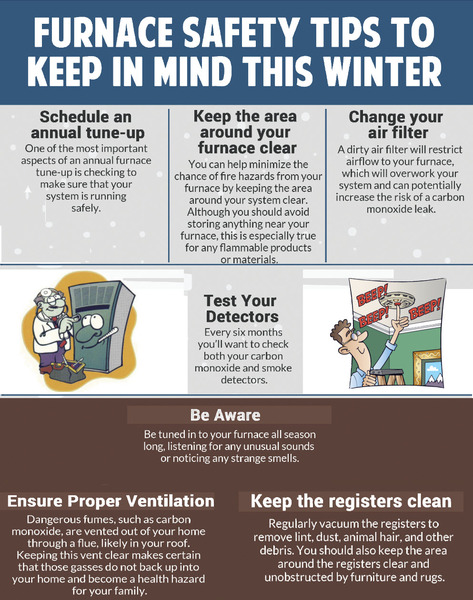
Clear the Area Around the Furnace
In order to prevent a furnace emergency and ensure proper operation, it is important to keep the area around the furnace clear of any clutter or obstructions. This includes removing any stored items, boxes, or other objects that may have accumulated near the furnace.
A clear area around the furnace allows for proper airflow and ventilation, which is essential for the furnace to function efficiently and safely. Blocked airflow can cause the furnace to overheat, leading to potential damage or malfunctions.
Additionally, a clutter-free area makes it easier for technicians to access the furnace for maintenance or repairs, should the need arise. Having unobstructed access to the furnace can save time and prevent delays in getting the necessary work done.
Here are some tips for clearing the area around the furnace:
- Remove any items stored within a two-foot radius of the furnace.
- Avoid stacking items on or near the furnace.
- Keep the floor around the furnace clear of debris, such as dust, dirt, or loose insulation.
- Ensure there are no flammable materials near the furnace, as this can pose a serious safety hazard.
By keeping the area around the furnace clean and free from obstructions, homeowners can help prevent furnace emergencies and ensure the system operates smoothly throughout the winter months.
Check the Ductwork
One important aspect of furnace maintenance is checking the ductwork. Over time, the ducts can develop leaks or become disconnected, which can significantly reduce the efficiency of your furnace. Poorly sealed or disconnected ductwork can cause warm air to escape into unconditioned areas of your home, resulting in higher energy bills and a less comfortable living environment.
Here are some steps you can take to check the condition of your ductwork:
- Inspect the visible ductwork sections: Start by visually inspecting the exposed ductwork in your basement, attic, or crawl space. Look for any signs of damage, such as holes, loose connections, or disconnected sections. Use a flashlight if needed to thoroughly examine the ducts.
- Listen for air leaks: While your furnace is running, listen for any whistling or hissing sounds coming from the ducts. These noises can indicate air leaks or loose connections. Move from room to room and listen closely to each vent.
- Feel for air leaks: Use your hand to feel for any air leaks around the duct joints or connections. Hold your hand close to the seams and joints of the ductwork while the furnace is running. If you feel air blowing on your hand, it indicates that there is a leak.
- Check for insulation: Insulation plays a crucial role in preventing heat loss through the ductwork. Make sure that the exposed ductwork is properly insulated. If you notice any gaps or insufficient insulation, consider adding more insulation to improve energy efficiency.
If you discover any issues with your ductwork, it’s important to address them promptly. Leaks and disconnected ducts can lead to a significant waste of energy and decreased comfort in your home. You may consider hiring a professional HVAC technician to repair or replace damaged ductwork.
Protect Exposed Pipes
Winter weather can pose a threat to your home’s plumbing system, particularly exposed pipes. Frozen pipes can lead to costly repairs and significant water damage. Here are some tips to help protect your exposed pipes during the winter:
- Insulate pipes: Use insulation sleeves or wraps to protect exposed pipes from freezing temperatures. Wrap the insulation around the pipes and secure it with tape or zip ties.
- Apply heat tape: Heat tape is a great solution for preventing frozen pipes. It has a built-in thermostat that turns on when temperatures drop below a certain level. Wrap the heat tape around the exposed pipes and plug it into an electrical outlet.
- Keep the temperature stable: To prevent pipes from freezing, it’s important to maintain a consistent temperature inside your home. Set your thermostat to a minimum temperature, even when you’re away, to ensure that the pipes are kept warm.
- Open cabinet doors: If you have pipes located inside cabinets, open the doors to allow warm air to circulate around them. This can help prevent freezing.
- Seal cracks and gaps: Inspect your home for any cracks or gaps near pipes that could let cold air in. Use caulk or insulation to seal any openings and keep the pipes protected.
- Disconnect hoses: If you have exterior hoses connected to outdoor faucets, disconnect them before winter arrives. This will help prevent water from freezing and potentially bursting the pipes.
- Allow faucets to drip: When temperatures drop significantly, allowing faucets to drip can help relieve pressure in the pipes and prevent them from bursting. Just a slow drip is enough to keep the water flowing.
By taking these steps to protect your exposed pipes, you can prevent costly plumbing emergencies and ensure a smooth winter season.
Seal Drafts
One of the most effective ways to prevent a furnace emergency and keep your home warm during the winter is to seal any drafts. Drafts can not only make your home feel chilly, but they can also cause your furnace to work harder and less efficiently. Here are some tips to seal drafts in your home:
- Weatherstripping: Use weatherstripping to seal gaps around doors and windows. This can prevent cold air from leaking in and warm air from escaping. Weatherstripping is easy to install and can make a big difference in the draftiness of your home.
- Caulking: Check for any gaps or cracks in your walls, floors, and ceilings and seal them with caulk. Caulking is an inexpensive and effective way to seal drafts and improve energy efficiency.
- Insulate: Make sure your home is properly insulated. Insulation acts as a barrier to prevent drafts and keep your home warm. Insulate your walls, attic, and crawl spaces to ensure maximum efficiency.
- Window Film: Apply window film to your windows to prevent drafts. Window film is a thin, transparent sheet that can be easily applied to the glass. It helps to insulate the windows and reduce heat loss.
- Door Sweeps: Install door sweeps on the bottom of exterior doors to seal gaps between the door and the floor. Door sweeps are easy to install and can greatly reduce drafts in your home.
By taking the time to seal drafts in your home, you can not only prevent a furnace emergency but also save money on your energy bills. Sealing drafts will help your furnace work more efficiently and keep your home warm and comfortable throughout the winter.
Insulate the Attic
Insulating the attic is an important step in preventing a furnace emergency during the winter months. A poorly insulated attic can lead to heat loss and cause your furnace to work harder to maintain a comfortable temperature in your home. This can result in increased energy costs and may even cause your furnace to break down.
There are a few different types of insulation that can be used in the attic, including fiberglass batts, cellulose insulation, and spray foam insulation. Each type has its own advantages and disadvantages, so it’s important to research and choose the best option for your home.
Insulating the attic involves placing insulation material between the joists and ensuring that there are no gaps or areas where heat can escape. This can be a DIY project, but if you’re not comfortable working in the attic or unsure about the process, it’s best to hire a professional insulation contractor.
In addition to insulating the attic, it’s also important to seal any air leaks or gaps in the attic floor and walls. These leaks can allow cold air to infiltrate the attic and reduce the effectiveness of the insulation. Common areas to check for air leaks include around electrical outlets, light fixtures, and attic access doors.
By properly insulating your attic and sealing any air leaks, you can help ensure that your furnace operates efficiently and smoothly throughout the winter. This not only helps to prevent a furnace emergency but also reduces energy costs and keeps your home comfortable.
Keep Vents Clear
The vents in your home play a crucial role in maintaining a warm and comfortable environment during the winter months. It is important to keep these vents clear of any obstructions to ensure that your furnace operates efficiently and effectively. Here are some tips to help you keep your vents clear:
- Remove furniture and objects: Make sure that no furniture or large objects are blocking the vents. This includes sofas, chairs, beds, and even toys. Blocking vents can restrict the airflow and cause your furnace to work harder than necessary.
- Clean vents regularly: Dust and debris can accumulate in the vents over time. Use a vacuum cleaner or a soft brush to clean the vents periodically. This will prevent any buildup that may restrict the airflow.
- Check for any obstructions: Inspect the vents for any obstructions, such as curtains, rugs, or plants. These items can inadvertently block the vents and hinder the proper circulation of heated air throughout your home.
In addition to maintaining clear vents, it is also important to ensure that your air filters are clean. Dirty filters can further impede the airflow and put strain on your furnace. A clogged filter can even lead to a furnace emergency. Therefore, it is recommended to check and replace your air filters regularly.
By keeping your vents clear and maintaining a clean furnace system, you can prevent potential furnace emergencies and enjoy a smooth and comfortable winter season.
Maintain a Constant Temperature
One of the key steps in preventing a furnace emergency is to maintain a constant temperature in your home. Fluctuations in temperature can put a strain on your furnace and lead to breakdowns. Here are some tips to help you keep a consistent temperature:
- Set your thermostat appropriately: Make sure your thermostat is set at a comfortable temperature for you and your family. Try to avoid frequent adjustments, as this can cause your furnace to work harder to maintain the desired temperature.
- Insulate your home: Proper insulation helps to keep the heat inside your home during the cold winter months. Seal any drafts around windows and doors, and consider adding insulation to your walls and attic.
- Use window coverings: Close your curtains or blinds during the night to trap the heat inside. Open them during the day to allow natural sunlight to warm up your home.
- Keep doors and windows closed: Make sure all doors and windows are closed tightly to prevent cold air from entering your home and warm air from escaping.
- Use ceiling fans: In the winter, set your ceiling fans to rotate clockwise at a low speed. This will push the warm air down and help distribute it evenly throughout the room.
Maintaining a constant temperature not only helps to keep you comfortable, but it also reduces the strain on your furnace and lowers your energy bills. By following these tips, you can ensure a smooth and warm winter without any furnace emergencies.
Be Prepared for Emergencies
While you can take steps to prevent furnace emergencies, it’s always a good idea to be prepared for any unexpected situations. Here are some tips to help you be ready:
- Keep emergency contact numbers handy: Make sure you have the contact information of a reliable HVAC technician or furnace repair service readily available. This will come in handy if you ever need immediate assistance.
- Create an emergency kit: Prepare a kit that includes essentials such as extra blankets, flashlights, batteries, a portable heater, and non-perishable food items. This will be useful in case you experience a furnace breakdown during extremely cold weather.
- Check your smoke and carbon monoxide detectors: Regularly test your smoke and carbon monoxide detectors to ensure they are functioning properly. This is especially important during the winter months when furnaces are in heavy use and can increase the risk of carbon monoxide leaks.
- Have a backup heating source: Consider having a backup heating source, such as a generator or a wood-burning stove, in case your furnace fails unexpectedly. This can provide temporary heat until professional repairs can be made.
- Know the location of your main shut-off valve: Familiarize yourself with the location of the main shut-off valve for your furnace. In the event of a gas leak or any other emergency, you will be able to quickly shut off the gas supply.
- Regular maintenance: Schedule regular maintenance for your furnace to ensure it is running efficiently and to catch any potential issues before they become emergencies. A professional technician can inspect, clean, and tune up your furnace, helping to prevent unexpected breakdowns.
By following these tips, you can better prepare yourself for any furnace emergencies and ensure a smooth winter season.
Q&A:
What is the importance of maintaining a furnace before winter?
Maintaining a furnace before winter is important to ensure its proper functioning and to prevent any emergencies during the cold season. Regular maintenance helps to identify any potential issues and allows for timely repairs, reducing the chances of a breakdown when you need the furnace the most.
What are some common signs of a furnace in need of repair?
Some common signs of a furnace in need of repair include strange noises, uneven heating, frequent cycling, and high utility bills. If you notice any of these issues, it’s important to call a professional to inspect and repair your furnace before it turns into a major emergency.
How often should a furnace be inspected and serviced?
A furnace should be inspected and serviced at least once a year. It is recommended to schedule a professional inspection and maintenance before the start of the winter season. Regular servicing helps to identify and address any potential issues early on, ensuring that your furnace operates efficiently and reliably throughout the cold months.
What can homeowners do to maintain their furnace on their own?
Homeowners can do several things to maintain their furnace on their own. These include regularly replacing air filters, keeping the area around the furnace clean and free from flammable materials, and ensuring proper ventilation. Additionally, homeowners can check for any visible signs of damage or leaks and report them to a professional for further assessment and repairs.
Why is it important to hire a professional for furnace maintenance?
Hiring a professional for furnace maintenance is important because they have the knowledge, skills, and tools required to properly inspect and service the furnace. They can identify and address any potential issues that an untrained person might miss. Professionals also have the necessary certifications and safety training to handle any emergencies or repairs, ensuring the safety and efficiency of your furnace.
What steps can I take to prevent a furnace emergency during the winter?
To prevent a furnace emergency during the winter, there are several steps you can take. First, make sure to schedule regular maintenance for your furnace. This will help identify any potential issues before they become emergencies. Additionally, regularly change your furnace filters to ensure proper airflow and prevent any blockages. It’s also important to keep an eye out for any strange noises or smells coming from your furnace, as these can be indicators of a problem. Finally, be sure to keep the area around your furnace clean and free from any debris or clutter.
Why is regular maintenance important for preventing furnace emergencies?
Regular maintenance is important for preventing furnace emergencies because it allows a trained professional to inspect your furnace and identify any potential issues. During a maintenance appointment, the technician will clean your furnace, check for any loose or worn parts, and ensure that everything is working properly. By catching and addressing any problems early on, you can prevent them from becoming major emergencies in the middle of winter. Regular maintenance also helps to keep your furnace running efficiently, which can save you money on energy costs and extend the life of your system.

